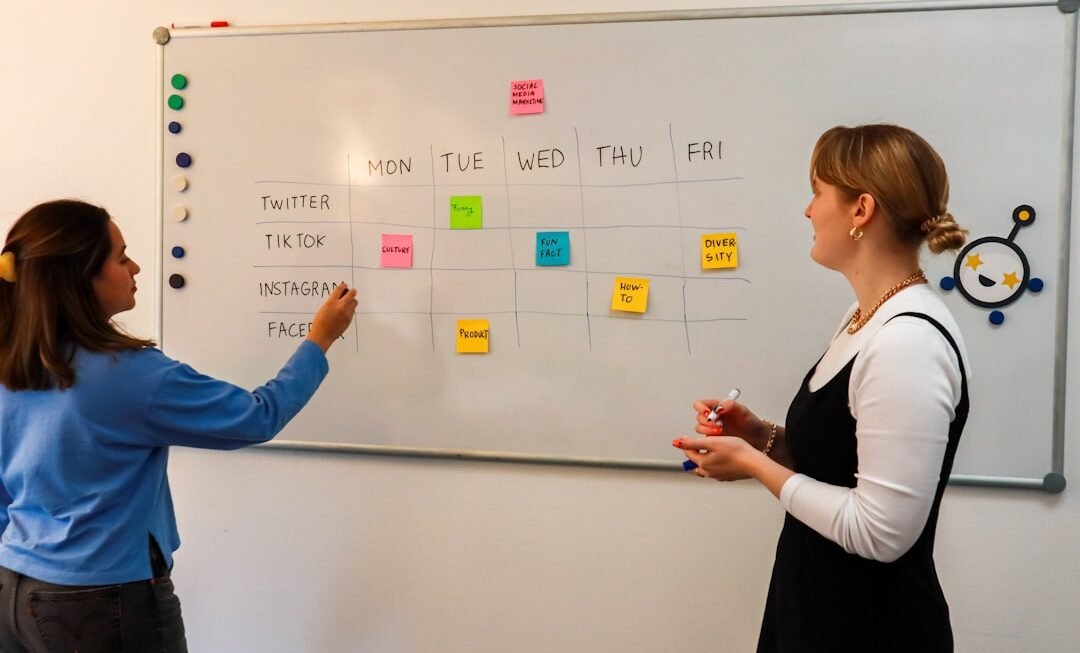In recent years, the landscape of education has undergone a significant transformation, largely driven by advancements in technology and the increasing accessibility of the internet. Social and collaborative online learning platforms have emerged as vital tools in this evolution, providing learners with opportunities to engage with peers and educators in dynamic, interactive environments. These platforms are designed to facilitate not only the acquisition of knowledge but also the development of social skills and collaborative abilities that are essential in today’s interconnected world.
By leveraging the power of technology, these platforms create spaces where learners can share ideas, collaborate on projects, and support one another in their educational journeys. The rise of social and collaborative online learning platforms can be attributed to several factors, including the growing demand for flexible learning options and the recognition of the importance of social interaction in the learning process. Traditional educational models often emphasize individual achievement, but contemporary approaches recognize that learning is inherently social.
As such, these platforms aim to break down barriers between learners, fostering a sense of community that enhances engagement and motivation. By integrating social elements into the learning experience, these platforms not only enrich the educational process but also prepare students for collaborative work environments they will encounter in their professional lives.
Key Takeaways
- Social and collaborative online learning platforms are becoming increasingly popular for their ability to facilitate community and peer interaction in the virtual learning environment.
- Community and peer interaction play a crucial role in enhancing the overall learning experience and outcomes for online learners.
- These platforms offer various features and tools that promote community building and peer interaction, such as discussion forums, group projects, and collaborative assignments.
- Peer interaction not only enhances learning outcomes but also fosters student engagement and a sense of belonging in the online learning community.
- Successful examples of social and collaborative online learning platforms include Coursera, edX, and Piazza, which have effectively leveraged community and peer interaction to enhance the learning experience for students.
The Importance of Community and Peer Interaction in Online Learning
Community and peer interaction play a crucial role in online learning environments, significantly influencing students’ motivation, engagement, and overall success. When learners feel connected to their peers and instructors, they are more likely to participate actively in discussions, share their insights, and seek help when needed. This sense of belonging can be particularly important in online settings, where students may otherwise feel isolated or disconnected from their educational experience.
Research has shown that students who engage with their peers are more likely to persist in their studies and achieve better academic outcomes. Moreover, peer interaction fosters a collaborative learning atmosphere that encourages the exchange of diverse perspectives. In traditional classroom settings, students often have limited opportunities to interact with their peers outside of structured activities.
However, online learning platforms can facilitate spontaneous discussions and collaborative projects that allow learners to explore topics more deeply. This interaction not only enhances understanding but also cultivates critical thinking skills as students learn to articulate their ideas and consider alternative viewpoints. The richness of these interactions can lead to a more profound comprehension of course material and a greater appreciation for the learning process itself.
How Social and Collaborative Platforms Facilitate Community Building
Social and collaborative online learning platforms are specifically designed to foster community building among learners. These platforms often incorporate features such as discussion forums, group projects, and real-time chat functionalities that encourage interaction and collaboration. By providing spaces for students to connect, share experiences, and work together on assignments, these platforms create an environment where relationships can flourish.
For instance, discussion boards allow learners to post questions or insights related to course content, prompting responses from peers that can lead to deeper discussions and a sense of camaraderie. Additionally, many platforms utilize gamification elements to enhance community engagement. Features such as leaderboards, badges, and rewards for participation can motivate students to engage more actively with their peers.
This gamified approach not only makes learning more enjoyable but also encourages students to take ownership of their educational experience. As learners interact with one another through these engaging features, they develop a sense of identity within the community, which can further strengthen their commitment to the learning process.
The Role of Peer Interaction in Enhancing Learning Outcomes
Peer interaction is a powerful catalyst for enhancing learning outcomes in online education. When students collaborate with one another, they engage in a process known as social constructivism, where knowledge is co-created through dialogue and shared experiences. This collaborative approach allows learners to challenge each other’s ideas, clarify misunderstandings, and build upon one another’s contributions.
As a result, students often achieve a deeper understanding of the subject matter than they would through solitary study alone. Moreover, peer interaction can lead to improved critical thinking skills. When students are required to articulate their thoughts and defend their viewpoints during discussions or group projects, they develop analytical skills that are essential for academic success.
For example, a student participating in a group project may need to negotiate differing opinions on how to approach a problem or task. This negotiation process not only enhances their understanding of the content but also equips them with valuable skills in communication and collaboration that are highly sought after in the workforce.
Examples of Successful Social and Collaborative Online Learning Platforms
Several social and collaborative online learning platforms have gained recognition for their effectiveness in fostering community and peer interaction among learners. One notable example is Moodle, an open-source learning management system that allows educators to create customized online courses with various interactive features. Moodle’s forums, wikis, and group activities enable students to collaborate on projects and engage in meaningful discussions, creating a vibrant online community.
Another prominent platform is Edmodo, which combines elements of social networking with educational tools. Edmodo allows teachers to create virtual classrooms where students can share resources, participate in discussions, and collaborate on assignments. The platform’s user-friendly interface encourages interaction among students while providing educators with tools to monitor engagement and assess student performance effectively.
Additionally, platforms like Slack have been adapted for educational purposes, allowing for real-time communication among students and instructors. Slack’s channels enable focused discussions on specific topics or projects, while its integration with various productivity tools enhances collaboration. These examples illustrate how diverse platforms can successfully promote community building and peer interaction in online learning environments.
Features and Tools that Promote Community and Peer Interaction
To effectively foster community and peer interaction within online learning environments, various features and tools are essential. Discussion forums serve as foundational elements where students can post questions or comments related to course content. These forums encourage asynchronous communication, allowing learners to engage with one another at their convenience while promoting thoughtful responses.
Real-time chat functionalities are another critical tool for enhancing peer interaction. Platforms that offer live chat options enable students to communicate instantly with their peers or instructors during scheduled sessions or office hours. This immediacy can help clarify doubts quickly and facilitate spontaneous discussions that enrich the learning experience.
Group project tools are also vital for promoting collaboration among learners. Features that allow students to work together on shared documents or presentations encourage teamwork and collective problem-solving. Additionally, incorporating multimedia elements such as video conferencing can further enhance interaction by allowing students to engage face-to-face virtually, fostering a sense of connection that is often missing in traditional online formats.
The Impact of Social and Collaborative Platforms on Student Engagement
The integration of social and collaborative elements into online learning platforms has a profound impact on student engagement levels. When learners feel connected to their peers and instructors through interactive features, they are more likely to participate actively in discussions and activities. This heightened engagement can lead to increased motivation as students see the value of their contributions within the community.
Furthermore, social platforms often provide opportunities for informal interactions that can enhance engagement beyond academic content. For instance, many platforms allow for the sharing of personal experiences or interests related to course topics, creating a more holistic learning environment. This informal engagement fosters relationships among students that can lead to increased collaboration on academic tasks as well as support networks for personal challenges.
The sense of belonging that arises from active participation in a community can also mitigate feelings of isolation that some online learners experience. By engaging with peers regularly through discussions or group activities, students develop connections that enhance their overall educational experience. This sense of community not only contributes to higher retention rates but also promotes a positive attitude toward learning.
Strategies for Fostering Community and Peer Interaction in Online Learning
To cultivate a thriving community within online learning environments, educators must implement effective strategies that promote peer interaction. One approach is to design courses that incorporate collaborative projects from the outset. By assigning group work early in the course timeline, educators encourage students to form connections with one another while working toward common goals.
Another strategy involves creating structured opportunities for discussion through guided prompts or questions related to course content. Educators can facilitate these discussions by actively participating themselves, modeling effective communication practices while encouraging students to share their thoughts openly. Additionally, establishing norms for respectful dialogue can help create a safe space for all participants.
Regular check-ins or feedback sessions can also enhance community building by allowing educators to gauge student engagement levels and address any concerns promptly. By demonstrating an investment in student success through ongoing communication, educators foster trust within the community that encourages continued participation.
Overcoming Challenges in Building Community and Peer Interaction Online
Despite the numerous benefits associated with social and collaborative online learning platforms, challenges remain in building effective communities among learners. One significant hurdle is the potential for miscommunication due to the lack of non-verbal cues present in face-to-face interactions. To mitigate this issue, educators should emphasize clear communication guidelines while encouraging students to express themselves thoughtfully.
Another challenge is ensuring equitable participation among all learners within group activities or discussions. Some students may dominate conversations while others may hesitate to contribute due to shyness or lack of confidence. To address this imbalance, educators can implement structured roles within group projects or use techniques such as “think-pair-share,” where students first reflect individually before discussing their ideas with a partner.
Additionally, technical issues can hinder peer interaction if students encounter difficulties accessing platforms or using specific tools effectively. Providing comprehensive training on platform functionalities at the beginning of a course can help alleviate these concerns while ensuring all learners feel comfortable navigating the online environment.
The Future of Social and Collaborative Online Learning Platforms
As technology continues to evolve rapidly, the future of social and collaborative online learning platforms holds exciting possibilities for enhancing educational experiences further. Innovations such as artificial intelligence (AI) could play a significant role in personalizing learning experiences by analyzing student interactions and tailoring content accordingly. AI-driven analytics may provide insights into individual engagement patterns, allowing educators to intervene proactively when students show signs of disengagement.
Moreover, advancements in virtual reality (VR) could revolutionize how learners interact within online environments by creating immersive experiences that simulate real-world scenarios. Imagine students collaborating on projects within a virtual space where they can manipulate 3D models or conduct experiments together regardless of geographical barriers. The integration of blockchain technology may also enhance trust within online communities by providing secure verification of credentials and achievements earned through collaborative efforts.
As these technologies develop further, they will likely reshape how we think about community building and peer interaction in education.
The Benefits of Community and Peer Interaction in Online Learning
The significance of community and peer interaction within online learning cannot be overstated; it serves as a cornerstone for effective education in digital environments. By fostering connections among learners through social and collaborative platforms, educators create vibrant communities that enhance engagement while promoting deeper understanding of course material. As technology continues to advance, the potential for enriching these interactions will only grow stronger—ultimately leading to more meaningful educational experiences for all involved.












